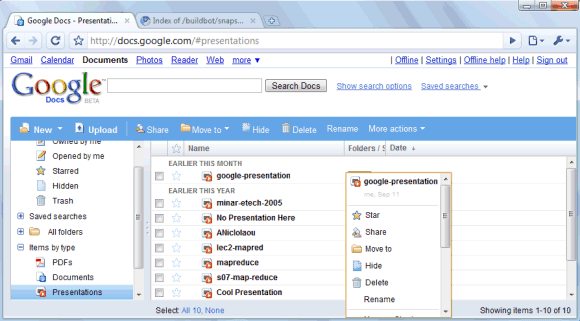
Some knols include an automatically-generated list of related knols in the sidebar:

Unfortunately, it's hard to find high-quality articles other than the knols featured on the homepage. The top search results for [Yahoo], [marine biology], [Alan Turing] and many other popular queries are articles copied from Wikipedia. Knol could easily filter these articles from search results, especially considering that Wikipedia has a conflicting license.
Did you spot any interesting knols? I found a well-documented history of Arctic explorers, a tutorial about photography composition and an introduction to usability.
Useful links:
* Knol's changelog
* the most visited knols










